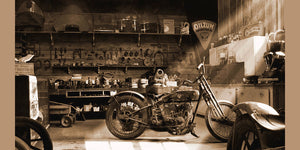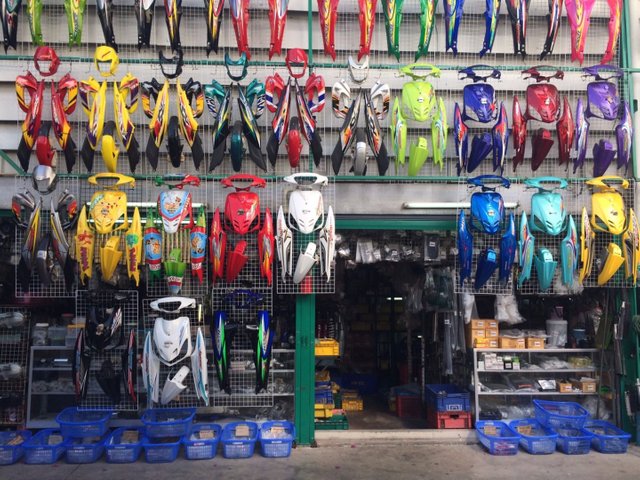Discover the current Motocross Gear NZ for Every Level of Rider
Recognizing the Vital Parts of a Motorcycle: A Comprehensive Guide for Lovers
For motorcycle fanatics looking to boost their riding experience and ensure their bikes run smoothly, understanding the vital elements of a motorcycle is paramount. Each component, from the engine's detailed functions to the important role of the braking devices, not just impacts performance yet likewise safety and convenience.
Engine Components

The camshaft plays a crucial duty in controlling the timing of the engine's valves, making sure the precise opening and closing required for reliable gas and air consumption, in addition to exhaust expulsion. This timing is essential to keeping optimum engine efficiency and effectiveness. Additionally, the carburetor or gas shot system, depending on the bike design, is in charge of mixing air with gas in the proper ratio for burning.
The air conditioning system, either air or liquid-based, functions to keep the engine's temperature within operational limits, stopping overheating and guaranteeing longevity - mx gear nz. Each part, carefully designed and integrated, adds to the seamless operation of the engine, defining the bike's power result and total efficiency
Transmission System
Essential to the motorcycle's functionality, the transmission system guarantees reliable power transfer from the engine to the wheels. This system makes up several critical components, including the clutch, gearbox, and last drive, each playing an important duty in translating the engine's power right into movement. The clutch, generally operated by a hand lever, serves to engage and disengage the engine from the transmission, allowing for smooth equipment modifications and regulated velocity.
The gearbox, typically referred to as the transmission correct, has a collection of gears that riders can by hand shift via to change the bike's rate and torque outcome. These gears are arranged in a series that makes it possible for the motorbike to accelerate smoothly and keep ideal engine efficiency throughout various rates. A lot of motorcycles make use of a consecutive transmission, requiring the motorcyclist to move equipments in a fixed order.
Braking Systems
While comprehending the transmission system is key to utilizing a motorcycle's power, similarly crucial is the ability to manage and stop that power efficiently, which is where stopping mechanisms come right into play. Brakes are essential for safety and security and performance, giving the cyclist with the necessary control to browse different terrains and conditions. Usually, motorcycles feature two kinds of braking systems: disc brakes and drum brakes.
Disc brakes are much more widespread in modern motorbikes as a result of their exceptional performance. They contain a brake disc, caliper, and pads. When turned on, the caliper squeezes the brake pads against the spinning disc, converting kinetic energy right into warmth, thus slowing down the wheel. This system supplies better warm dissipation, regular performance, and improved quiting power, particularly in damp conditions.
Conversely, drum brakes, though less common, are still found in some motorbikes. They work by pressing brake shoes websites versus the internal surface area of a drum affixed to the wheel. While normally much less effective in warm dissipation and quiting power, drum brakes are easier and extra affordable.
Understanding these stopping systems' subtleties permits motorcyclists to preserve their motorcycles properly and appreciate the engineering that mens leather vest makes sure efficient and secure quiting.
Suspension and Steering
Suspension and steering systems are vital components that significantly affect a motorbike's handling and trip convenience. The suspension system, including forks at the front and shock absorbers at the back, takes in road irregularities, enhancing stability and control. Front forks, upside down or normally telescopic, compress and rebound to minimize impacts, while rear shock absorbers preserve tire call with the roadway, crucial for traction and safety and security.
Steering, centered around the handlebars, links the rider to the motorbike's directional control. The steering head bearings make certain smooth procedure, enabling accurate ability to move. Appropriate alignment and upkeep of these bearings are essential for foreseeable guiding action and reducing cyclist exhaustion.
The suspension's adjustability is an additional crucial facet; preload, damping, and rebound settings permit personalization to match different riding conditions and styles. This flexibility is important for maximizing efficiency, whether browsing city streets or tackling rugged routes. Developments like digital shock absorber provide real-time changes, improving trip quality across varied terrains.

Electric Equipments
After making sure a smooth and regulated trip through reliable suspension and steering systems, interest turns to the electric systems, a pivotal facet of modern-day bikes. These systems play a crucial function not only in starting the engine however likewise in powering different elements that boost the capability and security of the motorcycle.
At the heart of a motorbike's electric system is the battery, which stores electrical energy essential for starting the engine and powering auxiliary systems - mx parts riding gear nz. The alternator or generator, combined with the rectifier-regulator, makes certain the battery continues to be billed while the motorbike is in procedure, converting mechanical energy into electric power and preserving voltage degrees
The ignition system, another crucial component, is liable for firing up the air-fuel combination in the engine's cylinders. Modern motorcycles often utilize an electronic ignition system, offering higher efficiency and integrity contrasted to typical systems.
Illumination systems, consisting of headlights, tail lights, and indications, are also crucial, ensuring presence and safety and security for the motorcyclist. Extra electronic parts such as sensing units, control systems, and displays add to advanced functions like fuel injection management, anti-lock stopping systems (ABDOMINAL MUSCLE), and digital dashboards, further boosting the riding experience.
Final Thought
A thorough understanding of a motorcycle's necessary elements, including the engine, transmission system, stopping mechanisms, suspension, guiding, and electric systems, is important for enthusiasts aiming to enhance security, performance, and convenience. Mastery of these components permits educated decisions relating to maintenance and upgrades, inevitably enhancing the riding experience. By integrating this understanding, motorcyclists can guarantee their motorcycles operate at peak efficiency and reliability, consequently optimizing both pleasure and long life of their automobiles.
For motorbike enthusiasts looking to boost their riding experience and ensure their bikes run smoothly, understanding the crucial components of a bike is extremely important.Essential to the bike's performance, the transmission system makes certain efficient power transfer from the engine to the wheels.While recognizing the transmission system is vital to taking advantage of a bike's power, equally essential is the capacity to manage and stop that power efficiently, which is where braking devices come into play. Generally, motorcycles include 2 kinds of braking systems: disc brakes and drum brakes.
A complete comprehension of a motorbike's crucial parts, including the engine, transmission system, stopping devices, suspension, steering, and electric systems, is essential for fanatics aiming to optimize security, performance, and convenience.